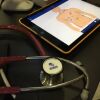Airway management is not any single therapy – it is a clinical objective. Anyone interested in better airway management masters the basics while continuing to learn new techniques.
Managing the difficult airway is an essential skill set. Many EMS systems have explored best practices to improve performance. What follows are some of the concepts, tools and techniques that many systems have implemented to help paramedics better manage the difficult airway in EMS.
First is to properly define the objective and challenge. The goal of airway management is to ventilate not intubate. It does not matter how good at intubation you are if your ventilation skills are not also up to standard. The bag-valve mask (BVM) is a problematic device when relied upon exclusively for emergency ventilation.
The challenge in airway management
With a BVM, the responder often has little real control over tidal volume, rate or pressure. In research supporting AHA standards, responders could only create a measurable positive pressure in the lungs on only 47% of their ventilation attempts with a BVM. That means they were largely ineffective with this type device.
Controlled ventilation is when the clinician manages all the key aspects of emergency ventilation, and not when the volume, rate or pressures delivered are neither known nor managed.
The reason why airway management is often so critical is because many still rely on what is basically an antique squeeze toy for ventilation.
The good option is to get a time-cycled volume constant EMS ventilator or resuscitator. Then means you can guarantee that even when you cannot intubate, the patient can still be effectively ventilated.
This could also strongly apply if your agency does RSI. When you plan to make people stop breathing, you would be well advised to practice controlled ventilation. There’s a range of different types available.
Have an airway management plan
The next is to have an airway plan. All the top EMS systems have a simple algorithm for airway management using the devices they provide. The American Society of Anesthesiologists developed a Difficult Airway Algorithm. Protocols have also evolved for Emergency Medicine Physicians in the ED setting.
Paramedics need these simple and effective tools, too. They need to be crafted around the available equipment. Because this varies so widely between different states or regions, EMS algorithms tend to be quite varied across the country.
Some EMS agencies carry a wide range of advanced airway tools, from video-laryngoscopes to percutaneous airway access devices. Others pretty much have just a cheap laryngoscope, ET tube and maybe a rescue airway.
That is why some experts advocate for a Personal Airway Algorithm, based on your skills, training, experience and available technology. I think this is a great option.
I like a simple airway plan that anatomically progresses in a logical sequence. For example, for many years my personal IV plan on a code was first attempt forearm, second the AC, and third an EJ. The only thing I changed was replacing EJ with IO when that technology became available.
You can do the same with the airway. First attempt through the mouth, second through the posterior pharynx and last through a new hole in the throat.
In other words, try intubation, then supraglottic rescue airway, and then, finally, a percutaneous access device.
Remember, more devices doesn’t necessarily always mean better outcomes -- they only provide more options. Meanwhile, training and regular practice on all of your options are essential, otherwise they will be of little use.
Size and convenience matter a great deal. I have had excellent luck with dual-lumen rescue airways, but they are both bulky and would not fit in my airway kit. If it’s an issue for you, there are smaller options available.
You need to review your airway plan annually and practice the plan monthly. Having an intubation manikin at your station is a first step to allow paramedics to practice their airway plan.
Reviewing the plan and the devices in your system and on the market will allow your plan to evolve with the technology. Maybe last year you could not afford a video-laryngoscope, but next year you can. That is the realistic consequence of prices dropping while competition increases.
With 10 years of history and many clinical trials behind them, video-laryngoscopes are proving to have a vital role for EMS providers. As cost comes down and quality and durability go up, they are quickly becoming viable for us.
Keep current with continuing education
Stay up to date with technology and clinical practice with continuing education. I highly recommend The Difficult Airway Course for EMS and the AirwayCam cadaver course. They both offer hands-on training in managing the difficult airway. If neither are available in your area, consider holding your own and bring in a local physician with expertise. Training and practice matters more than how many devices you carry.
Doing a better job of airway management means understanding the problem, having a plan, investing in good training and practice, practice, practice.












